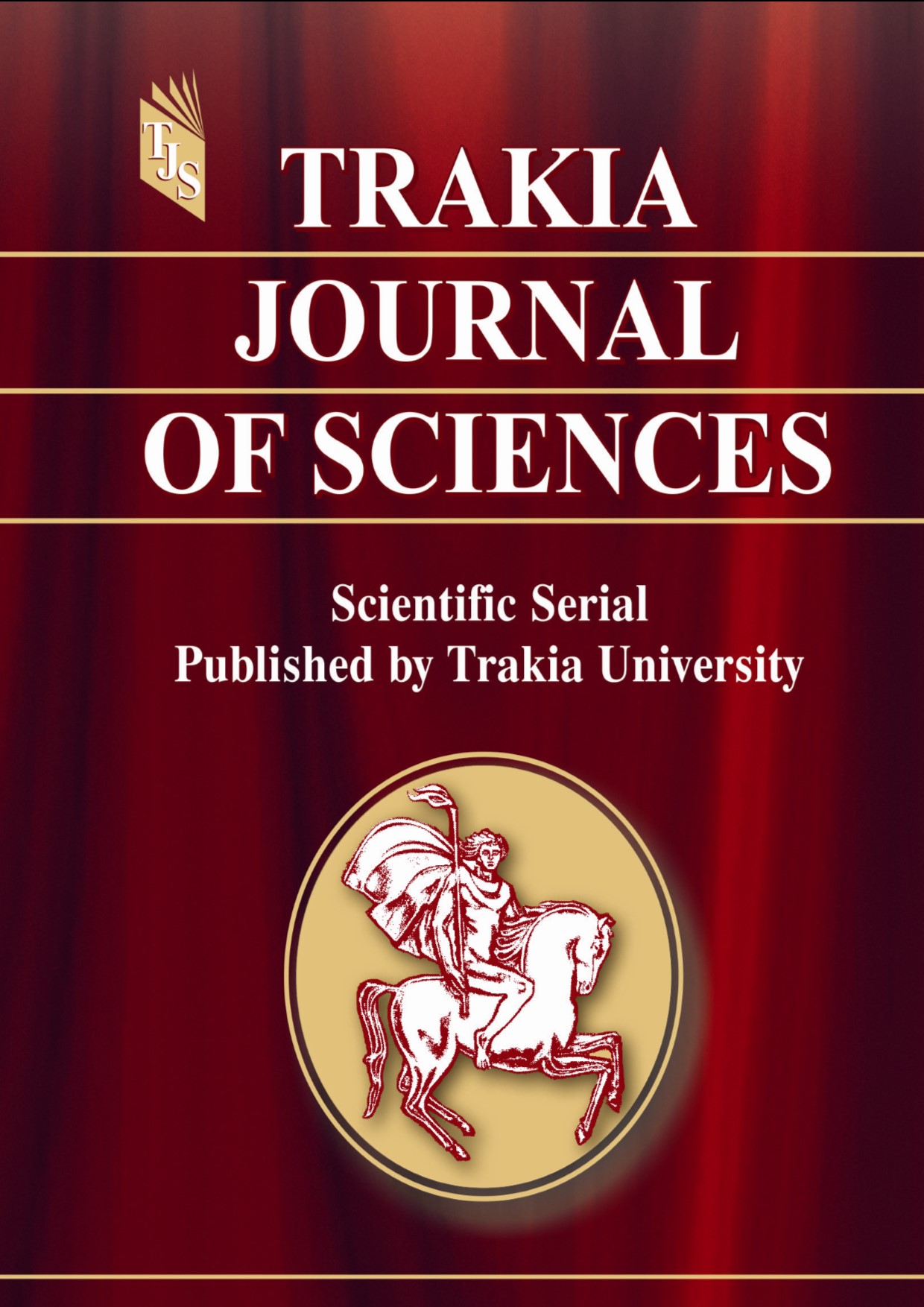WHICH CLINICAL PARAMETERS HAVE IMPACT ON OUTCOME IN THE EARLY PHASE OF COMPLICATED INTRA-ABDOMINAL INFECTION? – A PROSPECTIVE STUDY
DOI:
https://doi.org/10.15547/tjs.2024.01.008Keywords:
clinical parameters, SIRS, intra-abdominal infections, cIAIs , outcome, prognosisAbstract
Purpose: There is still no comprehensive analysis with Bulgarian patients investigating the association between perioperative clinical parameters and final outcome in the early phase of complicated intra-abdominal infection.
Methods: This single-center prospective study was conducted in the Clinic of Surgical Diseases at the University Hospital Stara-Zagora for the period November 2018 - August 2021. Before surgery and on the 3rd postoperative day (POD) we measured axillary temperature (t), systolic blood pressure (SBP), mean arterial pressure (MAP), respiratory rate (RR), heart rate (HR), mental status and systemic inflammatory response syndrome (SIRS) in 62 patients with complicated intra-abdominal infections (cIAIs).
Results: Of the 62 patients, nine died (14.5%). Preoperatively, only MAP successfully discriminated survivors from non-survivors (p = 0.027), which was confirmed by the ROC Curve analysis (AUROC = 0.731). Postoperatively, almost all of the clinical parameters except axillary temperature (AUROC = 0.573) showed prognostic ability – SBP (AUROC = 0.779) and MAP (AUROC = 0.864) for prediction of favorable outcome, HR (AUROC = 0.916) and RR (AUROC = 0.935) for prediction of lethal outcome.
Conclusion: All investigated clinical parameters, except for axillary temperature, demonstrated the ability to predict the final outcome on the 3rd POD in patients with cIAIs.
References
Tridente A, Clarke GM, Walden A, et al. Patients with faecal peritonitis admitted to European intensive care units: an epidemiological survey of the GenOSept cohort. Intensive Care Med. 2014;40(2):202-210
Sartelli M, Abu-Zidan FM, Labricciosa FM, et al. Physiological parameters for prognosis in abdominal sepsis (PIPAS) study: a WSES observational study. World J Emerg Surg 2019;14:34
Bone RC, Balk RA, Cerra FB, et al. American College of Chest Physicians/Society of Critical Care Medicine Consensus Conference: Definitions for sepsis and organ failure and guidlines for the use of innovative therapies in sepsis. Chest 1992, 101:1644–1655.
Malangoni MA, Inui T. Peritonitis - the Western experience. World J Emerg Surg. 2006;1:25
Ranju S, Nishant K, Abhijit B, Homay V. Preoperative predictors of mortality in adult patients with perforation peritonitis. Indian Journal of Critical care Medicine. 2011;15(3):157–63;
Billing A, Fröhlich D, Schildberg FW. Prediction of outcome using the Mannheim peritonitis index in 2003 patients. Peritonitis Study Group. Br J Surg. 1994;81(2):209-213
Ersumo T, WM Y, Kotisso B. Perforated peptic ulcer in Tikur Anbessa Hospital: a review of 74 cases. Ethiop Med J. 2005;43(1):9–13.
Convertino, Victor A.; Hasler RM, Nuesch E, et al. Systolic blood pressure below 110 mm Hg is associated with increased mortality in blunt major trauma patients: multicenter cohort study. Resuscitation. 2011 Sep;82(9):1202-7. doi:10.1016/j.resuscitation.2011.04.021;
Russel JA. The current management of septic shock. Minerva Med. 2008 Oct;99(5):431-58.;
Clarke DL, Chipps JA, Sartorius B, Bruce J, Laing GL, Brysiewicz P. Mortality rates increase dramatically below a systolic blood pressure of 105-mm Hg in septic surgical patients. Am J Surg. 2016;212(5):941-945
Yamamoto T, Kita R, Masui H, et al. Prediction of mortality in patients with colorectal perforation based on routinely available parameters: a retrospective study. World J Emerg Surg. 2015;10:24. doi:10.1186/s13017-015-0020-y;
Yun Tae Jung, Jiyeon Jeon, Jung Yun Park et al. Addition of lactic acid levels improves the accuracy of quick sequential organ failure assessment in predicting mortality in surgical patients with complicated intra-abdominal infections: a retrospective study. World Journal of Emergency Surgery (2018) 13:14
Dimitrov, E., Minkov, G., Enchev, E., et al. 2020. The Quick Sequential Organ Failure Assessment (qSOFA) Score is a Poor Mortality Predictor in Patients with Complicated Intra-abdominal Infections. Open Access Macedonian Journal of Medical Sciences. 8, B (May 2020), 221–225. DOI:https://doi.org/10.3889/oamjms.2020.3869.
Luo X, Li L, Ou S, et al. Risk Factors for Mortality in Abdominal Infection Patients in ICU: A Retrospective Study From 2011 to 2018. Front Med (Lausanne). 2022;9:839284
Lamia B, Chemla D, Richard C, et al: Clinical review: Interpretation of arterial pressure wave in shock states. Crit Care 2005; 9:601–606
Vincent JL, Moreno R, Takala J, et al: The SOFA (Sepsis-related Organ Failure Assessment) score to describe organ dysfunction/failure. Intensive Care Med 1996, 22:707-710
Waechter J, Kumar A, Lapinsky SE, et al. Interaction between fuids and vasoactive agents on mortality in septic shock:a multicenter, observational study. Crit Care Med. 2014;42:2158–68
Rhodes A, Evans LE, Alhazzani W, et al. Surviving Sepsis Campaign: international guidelines for management of sepsis and septic shock: 2016. Crit Care Med. 2017;45:486–552
Shin R, Lee SM, Sohn B, et al. Predictors of Morbidity and Mortality After Surgery for Intestinal Perforation. Ann Coloproctol. 2016;32(6):221-227
Brink A, Alsma J, Verdonschot RJCG, et al. Predicting mortality in patients with suspected sepsis at the Emergency Department; A retrospective cohort study comparing qSOFA, SIRS and National Early Warning Score. PLoS One. 2019;14(1):e0211133
Kushimoto S, Gando S, Saitoh D, et al. The impact of body temperature abnormalities on the disease severity and outcome in patients with severe sepsis: an analysis from a multicenter, prospective survey of severe sepsis. Crit Care. 2013;17(6):R271;
Clemmer TP, Fisher Jr CJ, Bone RC, et al. Hypothermia in the sepsis syndrome and clinical outcome. The Methylprednisolone Severe Sepsis Study Group. Crit Care Med. 1992;20(10):1395–401.;
Rumbus Z, Matics R, Hegyi P, et al. Fever is associated with reduced, hypothermia with increased mortality in septic patients: a meta-analysis of clinical trials. PLoS One. 2017;12(1):e0170152
Sartelli M, Catena F, Ansaloni L, et al. Complicated intra-abdominal infections in Europe: a comprehensive review of the CIAO study. World J Emerg Surg. 2012;7(1):36. Published 2012 Nov 29. doi:10.1186/1749-7922-7-36

Downloads
Published
Issue
Section
License
Copyright (c) 2024 Trakia University

This work is licensed under a Creative Commons Attribution-NonCommercial-NoDerivatives 4.0 International License.


